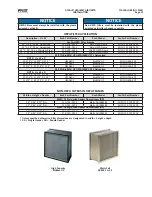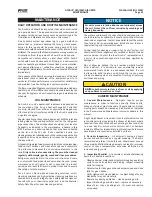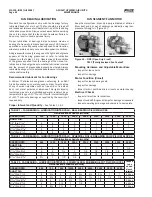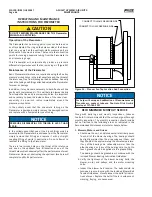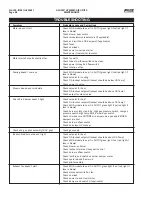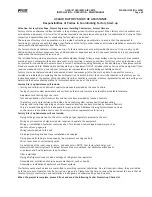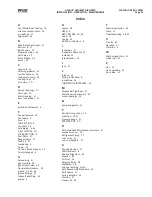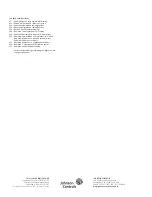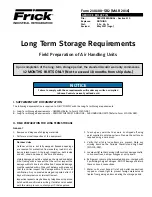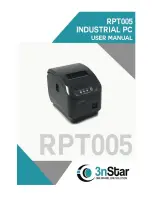
210.100-IOM (JUL 2018)
Page 40
ACUAIR
®
HYGIENIC AIR UNITS
MAINTENANCE
• Lubricate all moving part contact points and side seals.
• Inspect caulked joints between the damper frames and
the main structure – repair if the possibility of air or water
leakage exists.
FILTER MAINTENANCE
Both pre-filters and final filters should be visually inspected
at regular intervals and should be replaced when they appear
dirty or damaged. (Reference the Recommended Maintenance
Intervals chart)
The process air stream static pressure drop across the filters
will indicate the need to change the filters when compared
to the manufacturer supplied “Final” pressure drop data.
Generally these will be 1” w.g. for Koch Multi-Pleat XL8 pre-
filters and 1.5” w.g. for Koch 12” Multi-Cell final filters.
Finish and Sealing
AcuAir
®
units utilize a food grade caulk for air and water sealing
on the interior and exterior. The sealing on the units should
be inspected and repaired as necessary.
NOTICE
It is important that food grade sealant be used when
repairing or replacing unit caulking.
ELECTRICAL CONDUIT SEALING REQUIREMENT
The AcuAir hygienic unit has the potential to operate with
internal air humidity and external ambient temperatures
conducive to forming condensation. These factors make it
important that measures be taken to eliminate risk of water
and ice collecting where it has the potential to cause damage
or faulty operation. Before initial start-up of the AcuAir
hygienic unit a thorough inspection of all conduit openings
should be made and any compromised openings resealed.
Follow up inspections should be performed as indicated on
the recommended maintenance schedule.
Sources of Water or Ice
Water may enter the inside of the electrical conduit and
door switches by either of two methods: through unsealed
conduit ends and flexible conduit pigtails prior to the AcuAir
unit factory wiring being reconnected on site or by moisture
migrating into unsealed conduits that are open to the inside
the AcuAir enclosure. Moisture that migrates into an electrical
conduit that is then exposed to outdoor temperatures below
the dew point of the air will condense into water and drain to
the lowest location possible. If those outdoor temperatures
are cold enough this water may then turn into ice.
Remedy
In order to eliminate the collection of condensed water
inside electrical conduit, panels and instrumentation it is very
important that electrical conduit openings are adequately
sealed. Each sealed opening restricts the further migration of
moisture and the potential for water collection and damage.
The example in Figure 47 highlights the important locations
for sealing electrical conduit. This representation is not to
be considered all inclusive but rather a representation of the
typical locations requiring sealing putty.
TEMPERATURE SENSOR CALIBRATION
Temperature sensors that are out of calibration can affect both
the proper function and efficient operation of the hygienic air
unit. As part of the routine maintenance program, temperature
sensor calibration should be checked annually.
Two calibration methods are:
1. Ice Bath –
Cool a cup of water to 32°F using excess ice and agitat-
ing the water for several minutes. Immerse the tip of the
temperature sensor into the 32°F water while the AcuAir
controller channel is calibrated to 32°F.
Plug Vertically Down
Conduit Openings At
All Door Switches
Plug All Junction Box
Conduit Openings
Typical (2) Boxes
Plug All Conduit
Wall Penetrations
(Many)
Plug All Smoke Detector
Enclosure Electrical
Conduit Openings
Plug All Gas Wrapper Panel
Conduit Openings
Plug All Control Panel
Conduit Openings
Plug All Starter / VFD Panel
Conduit Openings
Figure 47 – Required Putty Locations
Summary of Contents for AcuAir
Page 54: ......








